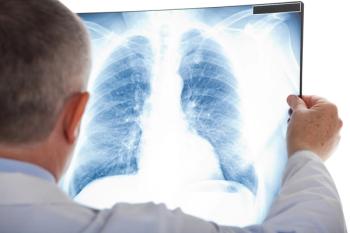
GE HealthCare wins FDA Authorization for deep-learning mammography technology
Key Takeaways
- Pristina Recon DL uses deep learning to improve 3D mammography image quality, enhancing early breast cancer detection without increasing radiation dose.
- Breast radiologists preferred Pristina Recon DL images in 99.1% of reviews, indicating its superior image quality and diagnostic confidence.
GE Healthcare launches Pristina Recon DL, a new AI-driven mammography technology enhancing image quality and supporting early breast cancer detection.
The system uses two sequential deep learning models to separate meaningful signal from noise, producing high-fidelity 3D volumes with fewer artifacts and clearer synthesized 2D views. It is the first mammography technology to combine deep learning with iterative reconstruction for digital breast tomosynthesis without increasing radiation dose, according to the company.
“Pristina Recon DL was born out of a deep commitment to our customers — listening closely to their feedback and working hand-in-hand with radiologists to enhance image quality and clarity,” said Jyoti Gupta, PhD, president and CEO of Women’s Health and X-ray at GE HealthCare. “By applying advanced deep learning technologies, we’re shaping the future of breast imaging — one defined by uncompromised image quality, faster workflows, and greater confidence in early cancer detection.”
Breast cancer remains one of the most common cancers among women, with one in eight expected to receive a diagnosis in their lifetime.
A recent study showed breast radiologists preferred images generated with Pristina Recon DL in 99.1% of reviews compared with earlier reconstruction methods, the company said. “This pioneering AI technology will help elevate breast care by delivering the clarity and consistency radiologists need to enable more confident diagnoses,” said Howard Berger, president and CEO of RadNet.
Additional features include zero-click acquisition, personalized protocols, 99% system uptime, and a patient-centric design intended to improve comfort. “With Pristina Via with Recon DL, we’re setting a new benchmark in breast imaging,” said Pooja Pathak, vice president and general manager of Mammography at the company. “We are excited to now offer customers uncompromised image quality combined with fast, accurate workflows.”
Gary Dee, president of Midstate Radiology Associates, said upgrading to the platform “refined our exam workflow, making it more efficient and patient-focused,” adding that the new technology “reinforces our confidence in delivering breast cancer care.”
Advances in AI-enhanced breast imaging
The authorization of Pristina Recon DL comes amid rapid progress in AI-supported breast imaging, particularly in digital breast tomosynthesis, image reconstruction and clinical decision support. Over the past several years, deep learning approaches have begun to reshape the mammography workflow: improving image quality, reducing reading time and helping radiologists identify subtle abnormalities that may be challenging to detect with conventional methods.
One major area of advancement is noise reduction and artifact minimization. Modern reconstruction algorithms now use trained neural networks to distinguish true anatomical structures from random noise, yielding cleaner and more detailed 3D volumes. This improves visibility of microcalcifications and soft-tissue distortions—often among the earliest signs of breast cancer—and enhances radiologists’ ability to detect cancers at earlier, more treatable stages.
AI-generated synthetic 2D images have also evolved. Earlier versions sometimes lacked clarity, but recent models can enhance clinically relevant features while retaining natural appearance. This capability helps reduce the number of images radiologists must review, streamlining workflows without sacrificing accuracy.
Meanwhile, facilities are increasingly pairing AI reconstruction tools with other emerging technologies, such as contrast-enhanced mammography (CEM), which several studies have found offers diagnostic performance comparable to MRI for certain patients. AI is also being embedded into biopsy guidance systems, accelerating procedures and improving targeting precision.
Across outpatient centers and academic institutions, radiologists report that AI-driven enhancements are reducing variability in image quality, improving diagnostic confidence, and supporting more personalized screening strategies. As the global burden of breast cancer continues to rise, experts say these technologies could play a critical role in expanding early detection and improving outcomes—particularly in high-volume settings where efficiency and accuracy are essential.
Newsletter
Stay informed and empowered with Medical Economics enewsletter, delivering expert insights, financial strategies, practice management tips and technology trends — tailored for today’s physicians.

















